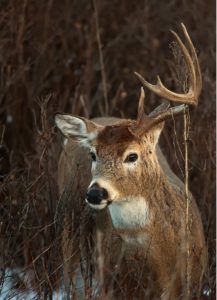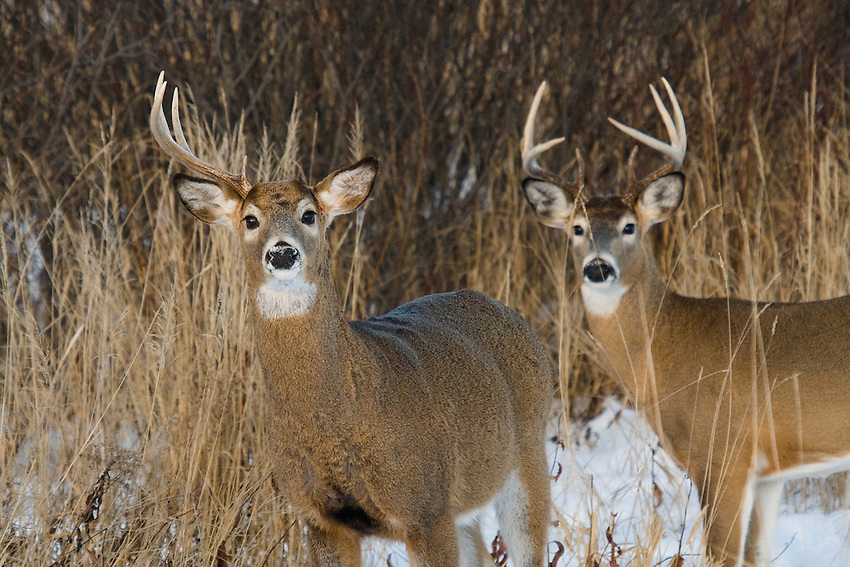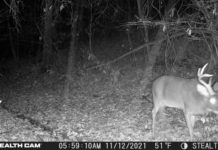Shed hunting has exploded in popularity among whitetail hunters across the country in recent years. The annual ritual is not only good for some outdoor exercise and scouting, but is also good opportunity to see what bucks have made it through to the next season and come home with some pieces to the puzzle.
Whitetail deer will typically lose their antlers between late December and late March, depending on many variables. We normally take to the woods mid-March when snow has dispersed. Scouting the areas, you are going to shed either via trail camera survey or long-range observation before you actually set foot into the woods, which can save you countless hours of walking aimlessly. Also, scout these areas when there is snow for travel corridors and winter feeding patterns beforehand to come up with a perfect game plan to come home with a bigger haul of shed antlers. Springtime woods are often wet and muddy so a great pair of boots is critical to keep your feet dry, warm, and comfortable. Binoculars will allow you to check out objects from a distance without having to walk 300 yards to check it out.

Desirable Browse/Bedding Areas
Desirable browse species are the most stable key food source in the winter whitetail’s diet. Year-in and year-out I have found countless numbers of sheds in or around these browse species. Apple or pear orchards, red and grey dogwood stands, stands of sumac, raspberry patches, overhanging grapevines, and white cedar stands are the top browse species we have found sheds in every season. Dirt mounds located in or around big fields are great locations where bucks will frequently bed while feeding during the night and watching for predators. Bedding areas with soft native grasses that include thermal cover is where I find the most sheds every year. Typically in the colder months deer like to lie on south-facing slopes because they can soak in the sun for the good majority of the day and move to a close food source to save energy. I have found sheds in random spots on multiple occasions, such as corn fields, bean fields and food plots; however, sticking to bedding areas, south-facing slopes, field edges, and food sources, these are the areas that seem to produce the best numbers.
Pick The Right Days
Sheds can be extremely hard to see sometimes, from how they lay on the ground and near similar-looking sticks, to the blended in common colors of the outdoors. I can’t imagine how many sheds I have walked by in my years of shed hunting, but having my eyes adjusted has helped me catch some of those tricky sheds. One thing I like to do if I find a shed early in the day is throw it out ahead of me to see various ways of how they lay and what they look like in the environment. Also, rainy days shed antlers pop out like un-melted snow in a dab brown world.
Timing
One main reason shed-hunters don’t find the number of sheds they’re after is they aren’t looking at the right times. If you go too early, you take the chance of pushing bucks off the property and dropping their sheds somewhere else. If you go too late, you take the chance of other hunters or trespassers scooping up the sheds before you do. Ten years ago, you could wait until mid–March to start looking; nowadays you need to get on them as soon as you believe they are down. The great part about shed hunting is that it gets you into the woods and spending quality time learning the ways of the whitetail. Once you have found your first shed, you will begin to recognize quality deer habitat.



















![The Best Deer Camp Chili [VIDEO] Deer Chili Ingredients, Tomatoes, Chili Spices](/wp-content/uploads/2015/10/Deer-Chili-Deer-Camp-Recipe-218x150.jpg)
![How to Call Elk Early in the Season [VIDEO]](/wp-content/uploads/2016/08/byers003-218x150.jpg)





![Idiots Disturb Hunter: How Would You Have Handled It? [VIDEO]](/wp-content/uploads/2015/10/DSC00110-e1474487693878-100x70.jpg)
![Albino Buck Shocked to Shed His Antlers [VIDEO]](/wp-content/uploads/2015/10/AlbinoDeer-100x70.jpg)